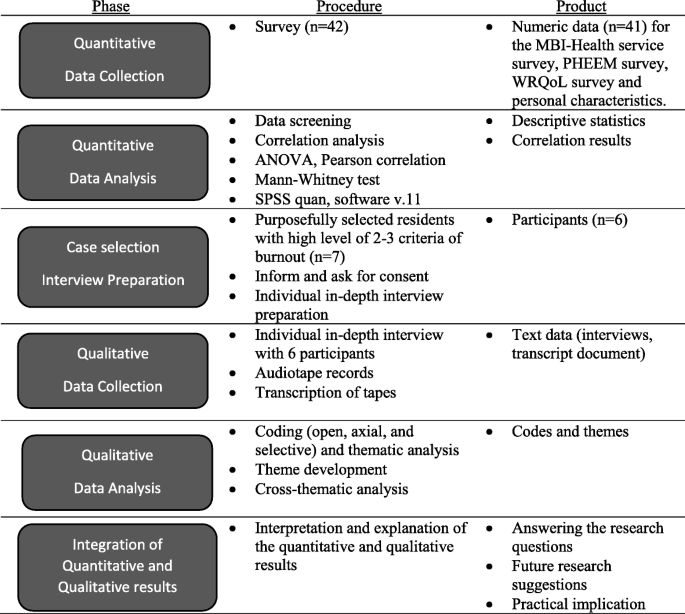

Validation of the Maslach Burnout Inventory-Human Services Survey for Estimating Burnout in Dental Students. Our findings show that the risk of burnout prevalence doubled from the third year to sixth year of training and that gender was not significantly associated with any of the subscales of burnout. The Maslach Burnout Inventory-Student Survey overcame difficulties encountered when students have little or no contact with patients. No significant association was found between gender and burnout subscales. Moreover, the prevalence of burnout risk was significantly higher in sixth-year students 35 (37.5%) compared with students in third year of training 26 (14.8%) (χ(2) test, p < 0.0001). Internal consistencies (Cronbach's alpha) for the three subscales on the whole sample were as follows: for exhaustion 0.78, cynicism 0.78, and efficacy 0.71. A cross-sectional study was carried out in a sample of 270 Spanish medical students-176 (65%) in the third year and 94 (35%) in the sixth year of training-using the Maslach Burnout Inventory-Student Survey questionnaire. The first aim of this study was to investigate the prevalence of the risk of burnout in medical students in preclinical and clinical years of training, using the Maslach Burnout Inventory-Student Survey, specifically designed and validated to assess the burnout in university students, and secondly, to investigate the association between gender and burnout subscales. Among factors associated with burnout in medical students, the gender shows conflicting results. It is questionable whether the Maslach Burnout is suitable for studying burnout prevalence in preclinical medical students because many questions are patient-centered and the students have little or no contact with patients. Galán, Fernando SanmartÃn, Arturo Polo, Juan Giner, Lucas
#MASLACH BURNOUT INVENTORY TEST PROFESSIONAL#
Conclusions: High work engagement of staff midwives was correlated to high professional efficacy and cynicism of their immediate superiors, suggesting that there might be crossover effects on mental conditions for work between staff midwives and their immediate superiors.Burnout risk in medical students in Spain using the Maslach Burnout Inventory-Student Survey. There was no correlation of work engagement between them. High work engagement of staff midwives was significantly correlated with the professional efficacy (AOR 1.93, 95% CI 1.12 - 3.33) and cynicism (AOR 2.01, 95% CI, 1.04 - 3.90) of their immediate superiors.

Results: Immediate superiors showed significantly higher level of work engagement than staff midwives, while there was no difference in the burnout. To examine the association of work engagement among staff midwives with their ages, marital status and work engagement and burnout of their superiors, logistic regression analysis was conducted. Work engagement and burnout (exhaustion, cynicism, and professional efficacy) were assessed by the Utrecht Work Engagement Scale and the Maslach Burnout Inventory-General Survey, respectively. Questionnaires were distributed to 452 midwives/nurses working on maternity and labor wards of 20 hospitals and responses from 96 staff midwives and 17 of their immediate superiors were analyzed. Methods: A cross-sectional questionnaire survey was employed in Japan.

The aim of study was to examine the work engagement and burnout of staff midwives working on maternity and labor wards and to determine the factors related to high work engagement of staff midwives, including their immediate superiors’ work engagement and burnout. Work Engagement, Burnout, Staff Midwives, Immediate SuperiorsĪBSTRACT: Introduction: Mental conditions for work among workers are related to clinical performance and influenced by colleagues within the same workplace. Relationship of High Work Engagement among Staff Midwives with Their Immediate Superiors’ Burnout on Maternity and Labor Wards in JapanĪUTHORS: Emiko Kawauchi, Reiko Inoue, Kazutomo Ohashi and Leiter, M.P., Eds., The Maslach Burnout Inventory: Test Manual, Consulting Psychologists Press, Palo Alto, CA. (1996) Maslach Burnout Inventory-General Survey.


 0 kommentar(er)
0 kommentar(er)
